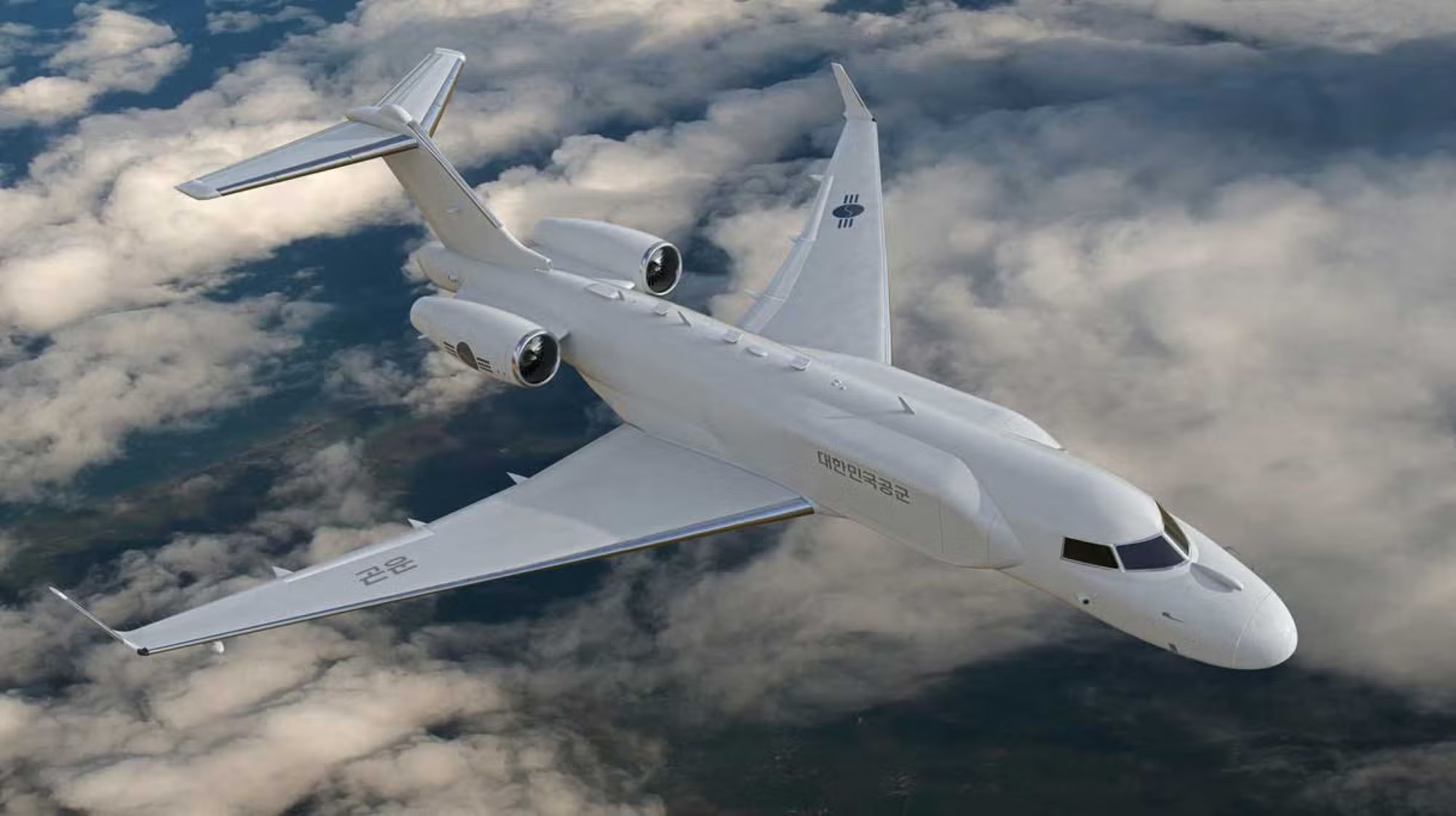Korean Air will purchase four Bombardier Global 6500 business jets, of which two will be modified with the help of L3Harris and the other two will be modified in South Korea.
L3Harris announced On October 20, 2025, it formally received the contract from South Korea for its next AEW&C (Airborne Early Warning and Control) aircraft. The consortium of L3Harris and Korean Air previously won the open competition organized by the Defense Acquisition and Programs Administration (DAPA) on September 30.
The program, valued at $2.6 billion, will involve the modification of four Bombardier Global 6500 commercial aircraft with the Israel Aerospace Industries (IAI) EL/W-2085 AESA (Active Electronically Scanned Array) conformal radar and other necessary systems that will be delivered to the RoKAF (Republic of Korea Air Force) by 2032. Korean Air would purchase the four aircraft and “would co-develop the No. 1 and No. 2 aircraft, and handle domestic modifications for the No. 3 and No. 4,” he said. ChosunBiz.
However, the DAPA website did not make any announcement in this regard, announcing the closure of the open tender and the award of the contract. In South Korea’s AEW&C II tender, which was decided by the 171st Defense Acquisition Program Promotion Committee in late September, the L3Harris proposal edged out the other contender, the Saab GlobalEye AEW&C system.
📢 Flagship contract: we have been chosen to deliver modified @Bombardier Global 6500 aircraft with airborne early warning and control systems for the Republic of Korea Air Force. These advanced aircraft promise to be mission-ready!✈️ Read more: https://t.co/QDGD71EFA4#SeoulADEX2025 pic.twitter.com/WXRRYsRdyi
– L3Harris (@L3HarrisTech) October 19, 2025
The US’s November 2024 FMS (Foreign Military Sales) direct approval of four more E-7s is now also effectively cancelled. The ROKAF already operates four E-7A Wedgetails, locally designated E-737, which were inducted in 2012 under the Peace Eye project. However, those aircraft had been experiencing low mission readiness rates.
korean reports
ChosunBiz He also explained that Korean Air is expected to purchase two more Global 6500 aircraft for the “electronic and electrical project,” referring to a program of airborne electronic warfare and jamming aircraft. This is South Korea’s Block-I Electronic Warfare System Development Project, for which DAPA is examining conceptual proposals from two consortia of Korean companies, including KAI (Korea Aerospace Industries)-Hanwha Systems and Korean Air-LIG Nex1.
To this end, L3Harris had also shown scale model concepts of the Global 6500-based conformal array system called “Crow”, along with the CAEW (Conformal Airborne Early Alert) and ISTAR platforms called “Phoenix” and “Griffon”, respectively, at the South Korea Aerospace Conference in 2024.
L3Harris showed a model of the Global 6500 “Phoenix” AEW&C at the #TADTE2025. The aircraft, based on the Bombardier Global 6500 business jet, is equipped with Israeli company ELTA Systems’ next-generation EL/W-2085 CAEW (L&S) dual-band AESA radar, which uses GaN… https://t.co/Jfms6K3XzA pic.twitter.com/0rnRYuRI8c
— 笑脸男人 (@lfx160219) September 20, 2025
A scale model of the L3Harris CAEW system was also on display at TADTE 2025 in Taiwan, for Taipei’s efforts to replace its aging E-2K AEW&C aircraft. South Korean reports describe the AEW&C aircraft as “flying radar and command posts” that “detect and analyze key targets across the country and carry out real-time command and control of military operations from the air.”
“The high-altitude, long-range commercial aircraft modified for airborne control mission uses next-generation radar technology based on artificial intelligence to support air battle management.” ChosunBiz saying.
These aircraft will fly faster and operate longer to improve the country’s mission readiness. They will also cruise at higher altitudes to improve security and provide combat-proven radar coverage to detect and track threats more quickly. The communications suite will provide interoperability with the United States, NATO and coalition partners, creating a networked battlespace with fifth-generation aircraft and beyond.
ChosunBiz‘s English version quoted a Korean Air official as saying: “Through this airborne control aircraft project, we will secure the technology to modify, integrate and maintain the latest special mission aircraft. As a leading national aerospace company, we will do our best to establish an industrial base for large-scale special mission aircraft to strengthen national defense capabilities.”
‘The best aircraft and technology tested for South Korea’
L3Harris President and CEO Christopher Kubasik said in the news release that the company is “ready to deliver an advanced aircraft fleet that will strengthen mission effectiveness for a key U.S. ally in the Indo-Pacific region.” He further added: “We look forward to collaborating with the Republic of Korea to develop, test, integrate and sustain this vital capability for years to come.”
Bombardier President and CEO Éric Martel spoke of the Global 6500’s “reliability and performance to support the most demanding missions,” ensuring the aircraft is “the preferred choice for governments seeking to modernize their capabilities.” […] amidst growing geopolitical tensions.”
IAI President and CEO Boaz Levy identified “world-class, field-proven” AEW and special mission aircraft technologies, such as “sensor miniaturization and advanced AESA radar technology, along with advanced detection and classification capabilities that enable success in even the most challenging missions.” TO fact sheet by L3Harris says the Israeli system is a dual-band system with GaN (gallium nitride) technology.
ROKAF E-737 Peace Eye (64-700) PUS/RKPK April 2023 pic.twitter.com/7WnwANCrhV
—Andréi (@Andrei32989622) May 3, 2023
Jin Kyu Lim, head of Korean Air Aerospace Division, said: “Through this collaboration, Korean Air will strengthen its capabilities in modification, integration and maintenance of the latest special mission aircraft.” Korean Air will also lead the “operation and maintenance” of the four programs going forward, “including meeting any future manufacturing requirements.”



